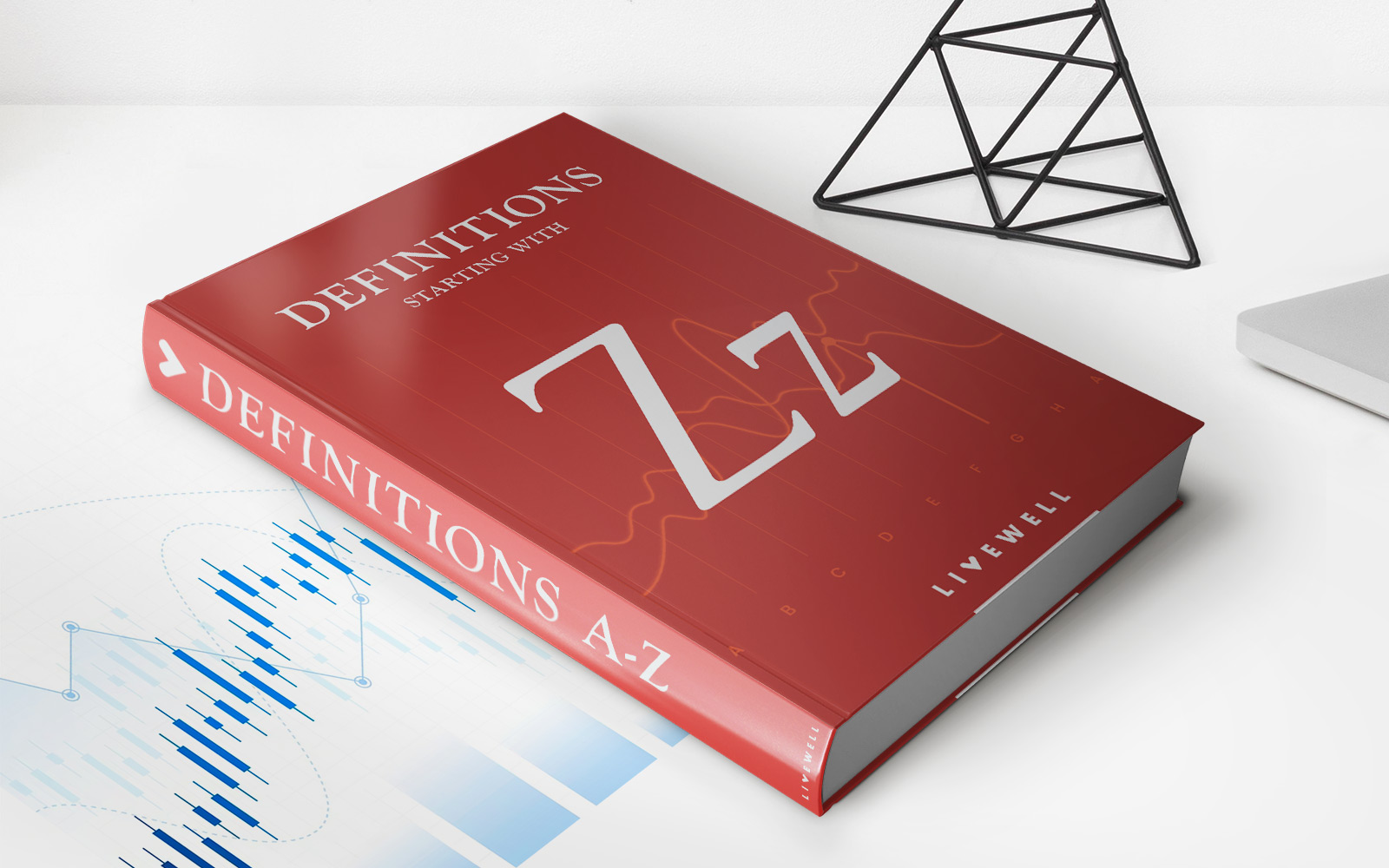

Finance
What Is A Revolving Credit?
Published: February 29, 2024
Learn all about revolving credit and how it can impact your finances. Discover the benefits and potential drawbacks of this financial tool. Gain insight into managing revolving credit effectively.
(Many of the links in this article redirect to a specific reviewed product. Your purchase of these products through affiliate links helps to generate commission for LiveWell, at no extra cost. Learn more)
Table of Contents
Introduction
Revolving credit is a financial tool that provides individuals and businesses with ongoing access to a pre-approved sum of money. Unlike traditional loans, which are typically disbursed in a lump sum and repaid in fixed installments, revolving credit allows borrowers to repeatedly borrow up to a certain limit without having to reapply for a new loan each time. This flexibility makes revolving credit a popular choice for managing day-to-day expenses, covering unexpected costs, and financing projects with uncertain funding needs.
Revolving credit arrangements are prevalent in both personal and business finance, offering a versatile means of accessing funds as needed. Understanding the mechanics, benefits, and potential drawbacks of revolving credit is crucial for making informed financial decisions. In this article, we will delve into the intricacies of revolving credit, including its definition, functionality, types, advantages, disadvantages, and the qualifications required to obtain it. By the end, you will have a comprehensive understanding of this dynamic financial tool and how it can be leveraged to meet various financial needs.
Definition of Revolving Credit
Revolving credit is a type of credit agreement that provides borrowers with a pre-approved spending limit and allows them to utilize funds up to that limit at their discretion. Unlike installment loans, which have a fixed term and regular payments, revolving credit does not have a predetermined end date and offers the flexibility to borrow, repay, and re-borrow within the approved limit. This revolving nature distinguishes it from other forms of credit and makes it a versatile financial tool for managing ongoing expenses and addressing fluctuating funding needs.
One of the defining features of revolving credit is the revolving line of credit, which serves as the maximum amount that can be borrowed. As the borrower repays the borrowed amount, the available credit is replenished, allowing for continuous use within the specified limit. Common examples of revolving credit include credit cards, home equity lines of credit (HELOCs), and personal lines of credit.
Furthermore, revolving credit often incurs interest on the outstanding balance, and the interest rates can vary based on the borrower’s creditworthiness and the terms of the credit agreement. This interest is typically calculated based on the average daily balance of the amount borrowed, adding a layer of cost to the convenience of revolving credit.
Understanding the concept of revolving credit is essential for individuals and businesses seeking flexible and accessible financing options. By grasping the fundamental principles and mechanisms underlying revolving credit, borrowers can make informed decisions regarding its utilization and effectively manage their financial resources.
How Revolving Credit Works
Revolving credit operates on the premise of providing borrowers with a pre-approved credit limit that can be utilized repeatedly within the specified boundaries. When a borrower accesses funds from a revolving credit account, they can use the entire approved limit or a portion of it, depending on their financial needs. This flexibility allows for on-demand access to funds without the need to reapply for a new loan each time, making it an adaptable solution for managing various expenses.
Upon using the revolving credit, the borrower incurs a balance, which represents the amount borrowed. Unlike traditional loans with fixed repayment schedules, revolving credit offers the freedom to repay the borrowed amount at any time, as long as the minimum payment, as stipulated in the credit agreement, is met. Additionally, borrowers have the option to carry a balance from one billing cycle to the next, subject to the assessment of interest on the outstanding amount.
As the borrowed amount is repaid, the available credit is replenished, allowing for future use within the approved limit. This revolving cycle of borrowing, repayment, and re-borrowing characterizes the functionality of revolving credit, providing a continuous source of funds that can be tapped into as needed.
Furthermore, revolving credit often comes in the form of a revolving line of credit, where the credit limit is predetermined based on the borrower’s creditworthiness and financial standing. The terms of the credit, including the interest rates, minimum payments, and any associated fees, are outlined in the credit agreement, providing transparency and clarity regarding the obligations and costs associated with the revolving credit arrangement.
Understanding how revolving credit works empowers borrowers to make informed decisions about when and how to utilize this financial tool to meet their ongoing funding requirements. By leveraging the flexibility and accessibility of revolving credit, individuals and businesses can navigate fluctuating financial needs with greater ease and efficiency.
Types of Revolving Credit
Revolving credit encompasses various forms of financial arrangements that offer flexibility and ongoing access to funds. Understanding the different types of revolving credit can help individuals and businesses select the most suitable option based on their specific financial needs and circumstances.
- Credit Cards: Perhaps the most widely recognized form of revolving credit, credit cards provide cardholders with a revolving line of credit that can be used to make purchases, pay bills, and access cash advances. The credit limit is predetermined based on the cardholder’s creditworthiness, and as balances are repaid, the available credit is replenished for future use.
- Home Equity Lines of Credit (HELOCs): HELOCs are secured revolving credit lines that leverage the equity in the borrower’s home. These credit lines allow homeowners to borrow against the value of their property, providing a flexible source of funds for home improvements, debt consolidation, or other financial needs.
- Personal Lines of Credit: Similar to credit cards, personal lines of credit offer borrowers a predetermined credit limit that can be accessed as needed. However, personal lines of credit are not tied to a specific purchase or expense, providing a versatile funding option for various personal financial requirements.
- Business Lines of Credit: Designed for businesses, these revolving credit lines provide access to funds that can be used for operational expenses, inventory purchases, or other business-related needs. Business lines of credit offer flexibility and can support cash flow management and short-term financing requirements.
Each type of revolving credit has its unique features and suitability for different financial scenarios. By understanding the characteristics of these revolving credit options, borrowers can make informed decisions about the most appropriate form of financing to meet their ongoing funding needs.
Advantages of Revolving Credit
Revolving credit offers several distinct advantages that make it a valuable financial tool for individuals and businesses seeking flexibility and accessibility in managing their funding needs.
- Flexibility: One of the primary advantages of revolving credit is its flexibility. Borrowers have the freedom to access funds as needed, up to the approved credit limit, without the constraints of a fixed loan term or a specific purpose for the borrowed funds. This adaptability makes revolving credit well-suited for managing fluctuating expenses and addressing unforeseen financial requirements.
- On-Demand Access: With revolving credit, borrowers have immediate access to funds without the need to reapply for a new loan. This instantaneous availability of funds can be crucial in addressing time-sensitive financial obligations or seizing opportunities that require prompt capital infusion.
- Interest Savings: Unlike traditional installment loans, where interest is typically assessed on the entire loan amount, revolving credit allows borrowers to pay interest only on the outstanding balance. This can result in potential interest savings, especially when the borrowed funds are repaid promptly, thereby reducing the overall interest costs.
- Revolving Line of Credit: The revolving nature of the credit line means that, as funds are repaid, the available credit is replenished for future use. This revolving line of credit provides a continuous source of funds that can be tapped into as needed, offering a reliable financial resource for ongoing expenses and funding requirements.
- Builds Credit History: Responsible use of revolving credit, such as timely repayments and prudent utilization of available credit, can contribute to building a positive credit history. This can enhance the borrower’s credit score and demonstrate creditworthiness, potentially improving access to favorable credit terms in the future.
By leveraging the advantages of revolving credit, borrowers can effectively manage their financial resources, address varying funding needs, and maintain a level of financial flexibility that aligns with their individual or business circumstances.
Disadvantages of Revolving Credit
While revolving credit offers flexibility and accessibility, it also presents certain disadvantages and potential drawbacks that borrowers should consider when evaluating this form of financing.
- Interest Costs: Revolving credit often carries higher interest rates compared to traditional installment loans. The revolving nature of the credit line, combined with the potential for carrying a balance from one billing cycle to the next, can result in substantial interest costs over time, especially if the outstanding balance is not promptly repaid.
- Debt Accumulation: The continuous availability of funds through revolving credit may lead to the temptation to accumulate debt beyond manageable levels. Without a fixed repayment schedule, borrowers may find it challenging to reduce their outstanding balances, potentially leading to a cycle of increasing debt and interest costs.
- Credit Score Impact: High credit utilization, where a significant portion of the available credit is utilized, can negatively impact the borrower’s credit score. This can affect the ability to secure favorable terms for future credit and loans, potentially limiting financial options.
- Variable Interest Rates: Many forms of revolving credit feature variable interest rates, which are subject to change based on market conditions. This variability introduces uncertainty regarding future interest costs, making it challenging to predict the long-term financial implications of carrying revolving credit balances.
- Potential for Overspending: The ease of accessing revolving credit may lead to impulsive or unnecessary spending, resulting in the accumulation of debt without a corresponding increase in assets or long-term value. Without disciplined financial management, revolving credit can contribute to financial strain and reduced savings.
Recognizing the potential disadvantages of revolving credit is essential for borrowers to make informed decisions about its utilization. By understanding the associated risks and challenges, individuals and businesses can effectively manage their revolving credit accounts and mitigate the potential negative impacts on their financial well-being.
How to Qualify for Revolving Credit
Qualifying for revolving credit, whether in the form of a credit card, a personal line of credit, or a business line of credit, typically involves several key factors that lenders or financial institutions consider when evaluating potential borrowers.
- Credit History: A strong credit history is a crucial factor in qualifying for revolving credit. Lenders assess an individual’s or business’s credit report to gauge past credit utilization, payment history, and overall creditworthiness. A positive credit history, characterized by timely payments and responsible credit management, enhances the likelihood of approval for revolving credit.
- Credit Score: The credit score, derived from the information in the credit report, plays a significant role in determining eligibility for revolving credit. Higher credit scores, indicative of lower credit risk, increase the likelihood of approval and may result in more favorable terms, such as lower interest rates and higher credit limits.
- Income and Financial Stability: Lenders often assess the borrower’s income and financial stability to ensure the ability to manage and repay the revolving credit. Demonstrating a steady income, sufficient to cover existing financial obligations and potential credit card or credit line payments, strengthens the qualification for revolving credit.
- Debt-to-Income Ratio: The ratio of existing debt obligations to income, known as the debt-to-income ratio, is a critical consideration for lenders. A lower debt-to-income ratio indicates a healthier financial position and may improve the chances of qualifying for revolving credit.
- Employment History: For individuals seeking revolving credit, a stable and consistent employment history can bolster their creditworthiness. Lenders often view steady employment as a positive indicator of financial responsibility and the capacity to manage credit obligations.
Understanding the criteria for qualifying for revolving credit empowers individuals and businesses to proactively manage their financial standing and increase their chances of approval. By maintaining a positive credit history, managing debt responsibly, and demonstrating financial stability, borrowers can position themselves favorably when seeking revolving credit options.
Conclusion
Revolving credit serves as a dynamic and adaptable financial tool that offers flexibility, accessibility, and ongoing funding for individuals and businesses. Whether in the form of credit cards, home equity lines of credit (HELOCs), or personal lines of credit, revolving credit provides a revolving line of credit that can be utilized as needed, without the constraints of fixed loan terms or specific purposes for the borrowed funds.
Understanding the mechanics of revolving credit, including its advantages, such as flexibility, on-demand access to funds, and potential interest savings, empowers borrowers to effectively manage their financial resources and address varying funding needs. However, it is equally important to recognize the potential disadvantages of revolving credit, such as higher interest costs, the potential for debt accumulation, and the impact on credit scores, in order to make informed decisions about its utilization.
Qualifying for revolving credit involves key factors such as credit history, credit score, income and financial stability, debt-to-income ratio, and employment history. By proactively managing these aspects of their financial standing, individuals and businesses can enhance their eligibility for revolving credit options and secure favorable terms that align with their financial goals.
In conclusion, revolving credit presents a versatile and valuable financing solution for addressing ongoing expenses, managing fluctuating funding needs, and seizing opportunities that require immediate access to funds. By understanding the intricacies of revolving credit and navigating its advantages and potential drawbacks, borrowers can leverage this financial tool to effectively meet their individual or business-specific financial requirements, while maintaining prudent financial management and responsibility.














